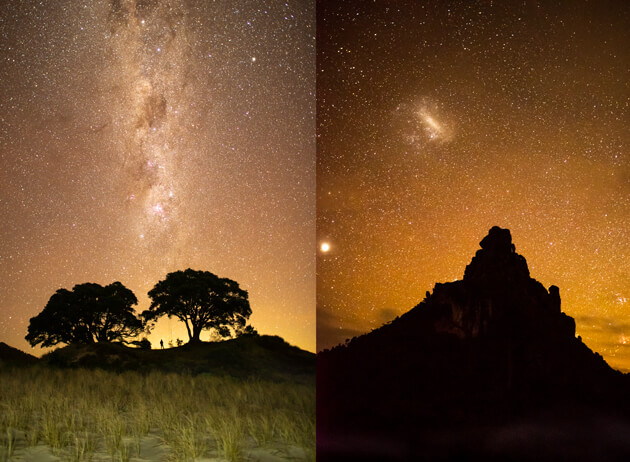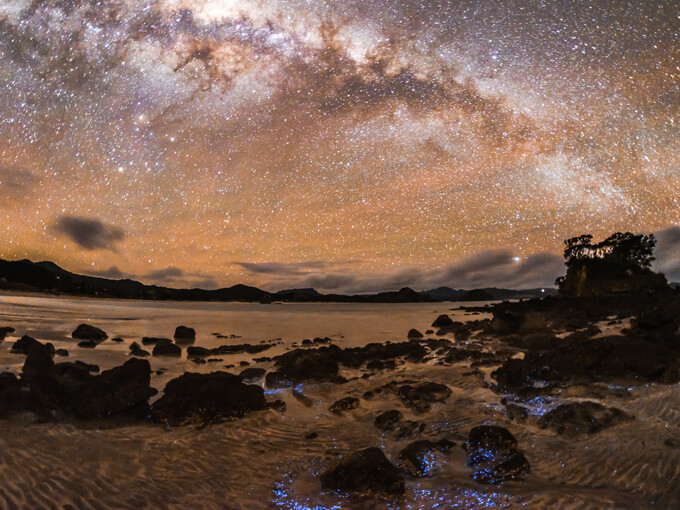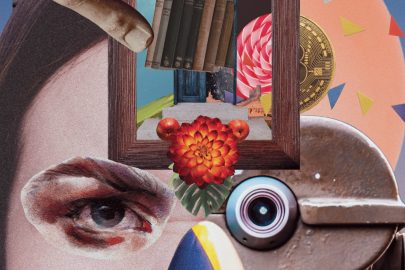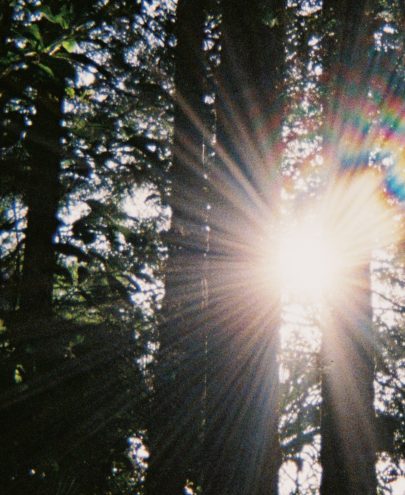Jul 10, 2019 What's On
One of the best things to do on Aotea/Great Barrier Island is to dress warmly, lie back and look at the stars, writes Lindsay Wright.
Good Heavens Great Barrier co- founder and star ambassador, Hilde Hoven, chatters excitedly as she props up a telescope that looks like a mortar, and sets out loungers against a background of wavelets foaming onto a deserted Medlands beach behind us.
As the sky grows dark, galaxies of far off light come into view and Hilde’s laser pointer highlights them for us. “The Pot” (Orions belt – Tautoru), then bright old Aldebaran off to the left and a twinkling Matariki (Pleiades). It’s easy when you know how – or are taught by someone who does. My night sky will never be the same again.
Ever since being appointed an International Dark Sky Sanctuary in 2017, it seems like the islands 800 or so full-time inhabitants have all learned a bit about the heavenly bodies that spangle their night skies.
Aotea (Great Barrier) was the first island dark sky sanctuary but Rakiura (Stewart Island) and Pitcairn have since been enlisted – though both have mains power from diesel generators so they can’t be as dark – or as close – as this.
And this month is a good time to take it all in, with a little bit of local colour blended in, at the Lights Out on Great Barrier / Aotea festival from 29 June until 27 July – an annual month-long celebration of the stars, and part of Elemental AKL, a region-wide winter festival.

There are free events almost daily: kite making for the kids (and young at heart) movie nights and a dark sky photography competition which is open to local folk and off-islanders alike.
Specialists like Jacob De Brues, will lecture on Polynesian astro navigation and astronomers will reveal the secrets of the night sky – in one of the best places in the world to do so.
And to crown the celebration, the Winter Wonderland Ball will be held at the Barrier Social Club on 27 July. Locals will be swapping gumboots and bush shirts for black tie (worn any way you like) and ladies may wear white, silver or icy blue. The $35 entry fee includes a glass of bubbles, dinner and entertainment with a door prize of two return flights on Barrier Air.
As author Molly Elliott observed in 1970: “these are people who will throw a party at the opening of an envelope.”
Power supplies on the island , which is 86km north east of Auckland ( 30 minutes by air, five hours by ferry and about $100 ) are all sustainable, provided by solar and wind. There is no street lighting and light pollution is almost unheard of. Just remember to take a torch if you’re venturing out at night.
The people of Aotea tend to be passionate about where they live. At least two businesses have come to light with trained “Star Ambassadors” on hand to guide visitors around the glittering night skies. Native bird life abounds – it’s not unusual to see endangered pateke, raucous kaka and hear the wingbeat wood pigeon (kereru) as they whoosh from tree to tree. Fledgling black petrel/taiko waddle up the islands highest mountain, Mt Hobson/Hirakimata, and launch themselves off to spend their first year at sea.
A favourite place to partake of a wine, have a good soak and see the stars are the Kaitoke hot pools. A short walk from the road and you can be up to your neck in warm, sultry water with a canopy of stars overhead.
Winter can be the best time to check out the heavens. The island population is depleted by holidaying locals. Patronage is down at island accommodation places and restaurants and there are lots of rental cars ready to explore the 43km long island. The roads are narrow and rarely straight and often used by cyclists.
From the moment you walk ashore from the ferry at Tryphena, or step off the plane at Claris; forget your phone, watch and diary – you’re on Barrier time. It does pay to allow a few days though, to ensure you get ideal star watching weather.
In 2003, a scientific study estimated that there are 10 times more stars in the sky than there are grains of sand on earth. On some nights it seems like most of them are glittering down on the Barrier.
For more information about the events on as part of Lights Out on Great Barrier, click here.






